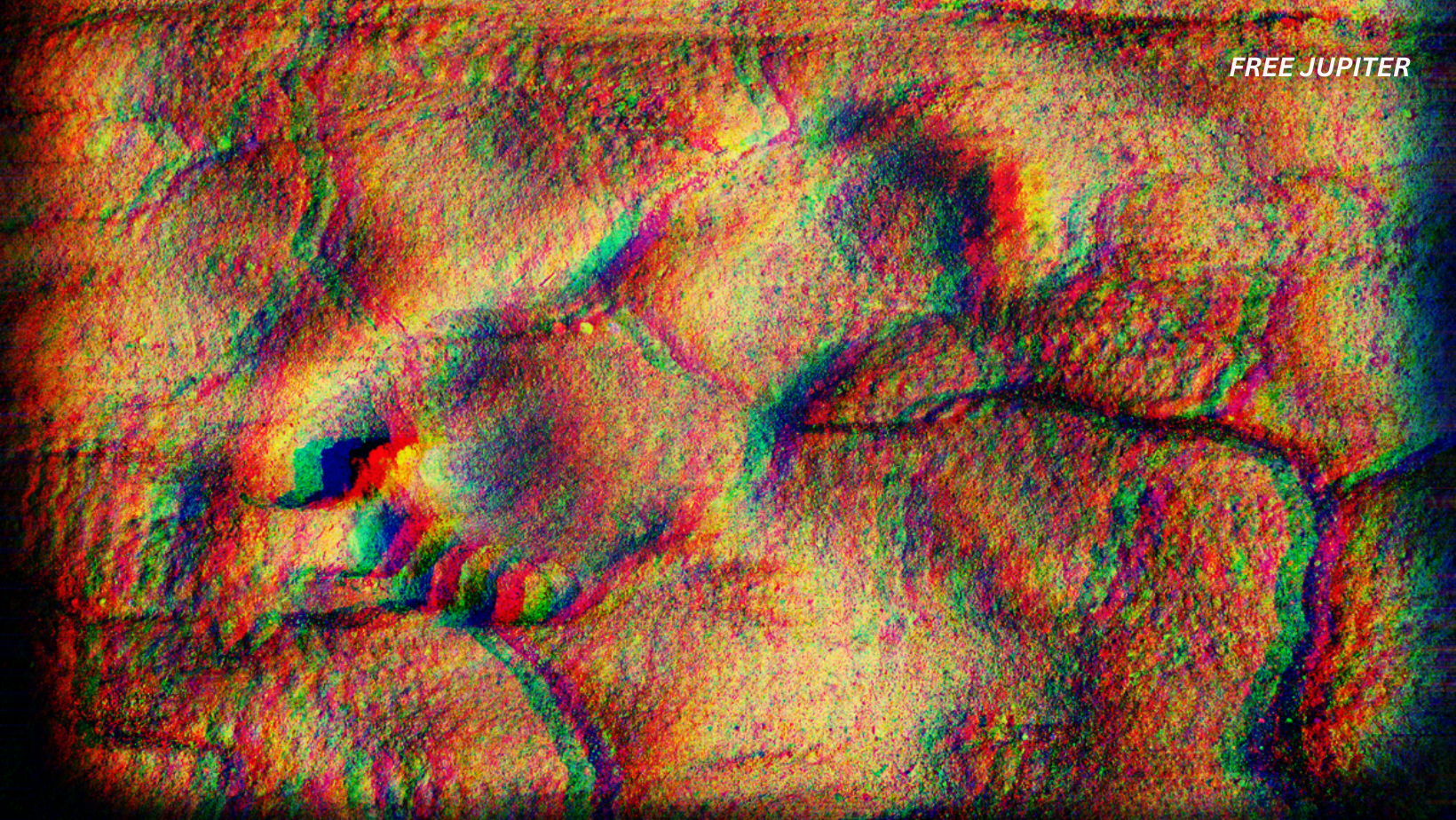Hidden beneath the shimmering gypsum sands of New Mexico, a discovery has quietly shaken the foundations of what was once believed about early human presence in North America. At White Sands National Park, a trail of footprints—long buried in ancient mud—has been unearthed, and with them, a story stretching back far beyond established timelines. The prints, remarkably preserved and delicately dated, have been found to be approximately 23,000 years old. That figure pushes human history on this continent back by roughly 10,000 years, dramatically revising long-standing assumptions.
For generations, scholars had placed the arrival of humans in the Americas around 13,000 years ago. That theory had been supported by archaeological evidence tied to the Clovis culture, once considered the continent’s earliest known human inhabitants. But the White Sands discovery, backed by rigorous dating methods, challenges this narrative, suggesting that humans were navigating these lands during the Last Glacial Maximum—a period defined by widespread glaciation and bitter cold. As new layers of evidence are uncovered, the tale of human migration grows more complex and intriguing.
Following the Footsteps of the Earliest Americans
It was in 2021 that the scientific community was first jolted by news of these ancient tracks. The initial analysis, led by researchers from the U.S. Geological Survey, relied on radiocarbon dating. Seeds from a plant known as Ruppia cirrhosa, or ditch grass, were recovered from the same sediment layers as the footprints. Their age was estimated at around 23,000 years, a figure that stunned many.
However, the dating method was not without controversy. Radiocarbon results can be skewed in environments where ancient groundwater rich in carbonates seeps through the soil—a phenomenon known as the “hard water effect.” As a result, skeptics questioned whether the results might have reflected the age of the water rather than the footprints.
To put those doubts to rest, the research team returned to White Sands, determined to verify their findings using alternative and more advanced techniques. One of those methods involved analyzing fossilized pollen. By isolating and dating pollen grains—particularly those from pine trees—using a method called flow cytometry, a much more stable and contamination-resistant source of data was provided.
Since the pollen was extracted from the same sedimentary layers as the footprints, and because it was unaffected by the hard water issue, the results served as a strong corroboration. The age once again hovered around 23,000 years.
Matthew Bennett, a geologist and co-author of the study, expressed satisfaction with the rigorous scrutiny. “It was encouraging to see our initial results tested so thoroughly,” he noted. “And now, it’s even more gratifying to see that further testing has not only upheld our work but provided new dimensions to the story of our ancestors.”
Read more: Scientists Have Just Discovered Dinosaur Cells That Have Survived For 68 Million Years
Three Lines of Evidence, One Timeless Truth
To further solidify the case, a third dating approach was employed—optically stimulated luminescence, or OSL. This method doesn’t rely on organic material at all. Instead, it gauges the last time quartz grains within the soil were exposed to sunlight. When quartz is buried, it traps energy from environmental radiation; exposure to light releases this energy. By measuring that trapped energy in the lab, scientists can calculate when the grains were last illuminated.
When the samples were analyzed, the energy levels supported the same conclusion. The sediment had been laid down—and the footprints formed—around 23,000 years ago. That consistency across three separate dating techniques left little room for doubt.
“These methods all converging on the same date adds a remarkable degree of reliability,” said Dr. Sally Reynolds, a paleoecologist who participated in the study. “We now have not just one, but three solid lines of evidence suggesting that humans were here long before previously imagined.”
The findings, published in the prestigious journal Science, represented the combined efforts of researchers from Bournemouth University, the U.S. Geological Survey, the National Park Service, the University of Arizona, and Cornell University.
Snapshots of a Vanished World
While the age of the tracks is impressive in itself, it is the stories they tell that bring the ancient landscape to life.
These aren’t just footprints—they are frozen moments in time. Some tracks appear to have been left by children skipping around shallow ponds. Others seem to follow alongside the footprints of prehistoric giants like ground sloths, suggesting hunting parties in pursuit. One poignant trail seems to show a young woman carrying a child. At several points, her balance falters, as though she were slipping on the slick surface of the wet mud.
“There were dangerous predators around in those days,” Bennett remarked. “Dire wolves, saber-toothed cats—they were all part of that ecosystem. It’s likely that these early people were not just travelers, but survivors.”
At one point in the trail, the woman appears to have set the child down briefly. Tiny footprints beside hers seem to confirm it. Whether to rest, adjust her burden, or hide from danger, the moment remains preserved in mud-turned-stone.
This intimate glimpse into ancient life is unlike anything offered by traditional tools or bones. These tracks offer something more personal—a record of behavior, emotion, and interaction. Ground-penetrating radar has been employed to uncover even more tracks, some of which lie hidden beneath layers of sediment.
“There’s something beautifully human about what we’re seeing,” said Bennett. “Not just survival, but daily life. Children playing. Adults helping one another. It paints a fuller picture of who these people were.”
Rethinking the Human Journey
The implications of these findings stretch far beyond New Mexico. For decades, it had been widely accepted that humans arrived in the Americas via the Bering Land Bridge—a now-submerged stretch of land that once connected Siberia and Alaska. According to the traditional timeline, that crossing would have occurred after the glaciers had begun to retreat, opening up ice-free corridors through which early humans could have traveled southward.
But if people were walking across what is now New Mexico 23,000 years ago, those corridors hadn’t yet opened. Which means one of two things must be true: either humans arrived much earlier via coastal routes, or they survived—and possibly thrived—within the ice-locked interior of the continent far earlier than believed.
Those possibilities have sparked fresh interest in alternative migration theories. Some researchers are now exploring the idea that small groups may have hugged the Pacific coastline, using rudimentary boats to navigate their way down the edge of the continent. Others suggest that lesser-known inland pathways may have been viable even during the coldest phases of the Ice Age.
Either way, the discovery has opened the door to a host of new questions. What technologies did these people use? How did they cope with extreme conditions? What kind of shelters did they build, and what did they hunt or gather to survive?
According to Dr. Reynolds, these questions now take center stage. “The missing 10,000 years between our previous estimates and these new findings represent a vast period of unknowns,” she explained. “Now, that gap can begin to be filled with meaningful scientific inquiry.”
Read more: 4,000 Meters Below The Sea, Scientists Have Finally Found the Incredible ‘Dark Oxygen’
A Landscape That Holds Stories
White Sands National Park has suddenly become one of the most significant archaeological sites on the continent. Not because of ancient weapons or bones, but because of footprints. These quiet impressions in hardened earth carry stories more vivid and emotionally resonant than any artifact ever could.
One moment shows a child’s playful wanderings near a puddle. Another reveals a hunting path alongside giant sloth prints. A mother stumbles while carrying her child, her struggle preserved across time. These are echoes of real lives lived in a landscape both beautiful and brutal.
Each footprint speaks volumes. Not of kings or battles, but of human persistence—of laughter, labor, fear, and love. These early inhabitants weren’t just surviving. They were thriving, creating communities, raising children, and adapting to a world vastly different from ours.
“The White Sands footprints are more than just a scientific find,” said Reynolds. “They are a window into the soul of humanity, stretching back further than we had dared imagine.”
As scientists continue their exploration, it is expected that more discoveries will follow. New technologies like radar imaging and refined dating techniques are likely to reveal even more tracks buried beneath the shifting dunes. With each step uncovered, a clearer image of early life in the Americas will emerge.
And as that picture sharpens, the story of human migration will be rewritten—not with broad strokes, but with footprints. Quiet, fleeting, yet eternal.









